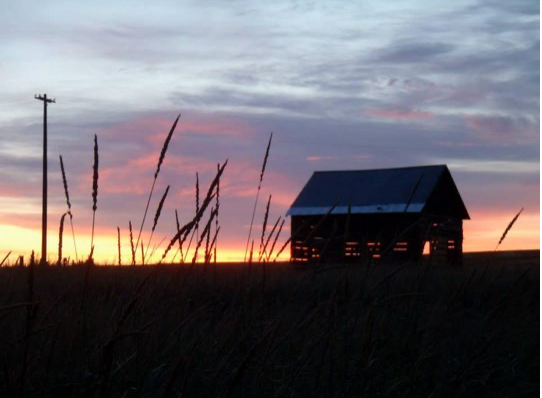On George Simpson’s wheat.
What does it mean to cultivate the land ? The First Foods include roots and berries, perennial crops that were sustainably harvested by the tribes in order that they produce again each year. What is replanting small bulbs for next year’s harvest but a form of cultivation ?
So we should be cautious about announcing the birth of agriculture in the Pacific Northwest with the arrival of the fur trade. The relationship between food and land and people here goes back much further.
There are certain kinds of agricultural food production, however, that we can specifically date. There were no cereal grains, no garden crops in the Pacific Northwest before 1808, when David Thompson planted a small garden at Kootenae House at the headwaters of the Columbia. His garden did not thrive, but the seeds were there.1 By 1817, the North West Company was growing pigs, cattle, potatoes, and a few vegetables at Fort George (Astoria), at a site chosen for its strategic importance over its fertile soil.
Then along came Sir George Simpson.

- Sir George Simpson on an inspection trip. Oregon Hist. Soc. Research Lib., Orhi 90421, OHQ 95.1
Simpson was the highest ranking officer in the Hudson’s Bay Company in North America. According to the Oregon Encyclopedia, Simpson was “a talented administrative martinet who … recognized the potential for the Columbia Department to turn a profit and spent the next two decades economizing and diversifying former North West Company holdings in the Oregon Country.”
The fur trade was in the business of resource extraction in the form of furs, not colonization through settlement. However, faced with the horrific expense of shipping (bad) food to the Columbia region from the east, Simpson tasked the posts with becoming self-sufficient. Grow your own, or do without.
He sent a bushel of wheat seed to Fort Vancouver in the fall of 1825, and McLoughlin distributed it to the Forts.
Every single version of Frenchtown I have ever read talks about “retired” traders. I prefer “former”. Simpson down-sized and out-sourced the staff of the forts. Instead of employing people to farm, he fired them and then sold them seed. Joe LaRocque was tending the Hudson’s Bay herds near Umapine in 1822. But he didn’t build a cabin at Frenchtown in 1824 so that he could have a little “pied-à-terre” in the country. He was setting up to farm, and sell the food back to the Fort.
Joe Laroque was still living at Frenchtown in 1858, when Theodore Kolecki drew maps of the Walla Walla valley for Col. George Wright’s expedition to punish the Coeur d’Alene. Those maps show the location of several of the Frenchtown farms, with little hash marks indicating cultivation. Zoom in and take a look.

Two hundred years of agricultural heritage. The wheat cultivation that carpets Eastern Washington started at two hundred years ago at Frenchtown.

This post was written for Frenchtown Historical Foundation by Sarah Hurlburt.
- The only grains native to the Western Hemisphere are maize, wild rice, and quinoa. Much of the information about the history of cereal grains in the Pacific Northwest, and about George Simpson’s wheat in particular is drawn from Harvest Heritage : Agricultural Origins and Heirloom Crops of the Pacific Northwest by Richard D. Scheuerman and Alexander C. McGregor, Washington State University Press, 2013.












